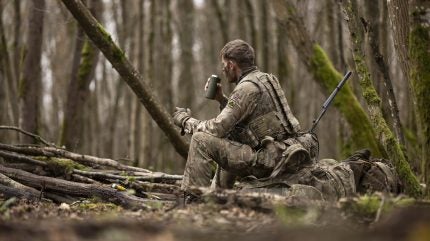
The global military body armour market is anticipated to register a compound annual growth rate (CAGR) of 4.4%, growing from $3.0bn in 2024 to $4.6bn by 2034, according to the latest forecasting report from GlobalData.
In its Global Body Armor Market Forecast 2024-2034, GlobalData states that the sector consists of three categories: hard armour, soft armour, and protective headgear. The market is expected to be dominated by the hard armour segment, which accounts for 62.3% of the market, followed by soft armour segment with 20.7% share.
Hard armour is classified as being identical in design to soft armour, but incorporates steel, ceramic, or titanium plates to defend against higher calibre ammunition. Soft armour is made from woven or laminated fibres and is capable of protecting the wearer from stabs or small calibre ammunition.
The dominance of armour offering protection against higher calibre ammunition could indicate that weapon lethality is increasing.
Among geographic segments, North America is projected to dominate the sector with a share of 41.3%, followed by Asia-Pacific and Europe, with shares of 29.0% and 22.2%, respectively.
Shifting military demographics also influencing change
The development of body armour has evolved significantly in recent years as new lighter materials are integrated into existing systems. In additional, the need to develop wearable armour suitable for both male and female personnel is also a key influencer in the sector.
The British Army in 2022 developed an updated version of the Virtus Scalable Tactical Vest (STV) following trials with serving female soldiers in order to meet the requirements of the growing number of servicewomen, the UK Government stated at the time.
Originally designed for those in close combat roles, the STV was used predominantly by men. However, after the opening of all roles throughout the military to women, the armour had to be adapted to fit differing physical requirements.
the new range of equipment was intended to be part of the UK Ministry of Defence’s efforst to is part of our efforts to continuously improve the design of our soldiers’ body armour, and to ensure it is fit for purpose, improves comfort and continues the modernisation of the UK military.
The updated protective equipment was the result of collaboration between several Ministry of Defence and industry organisations including Defence Science and Technology Laboratory, Defence Equipment and Support and Virtus manufacturer, Source Tactical Gear.







